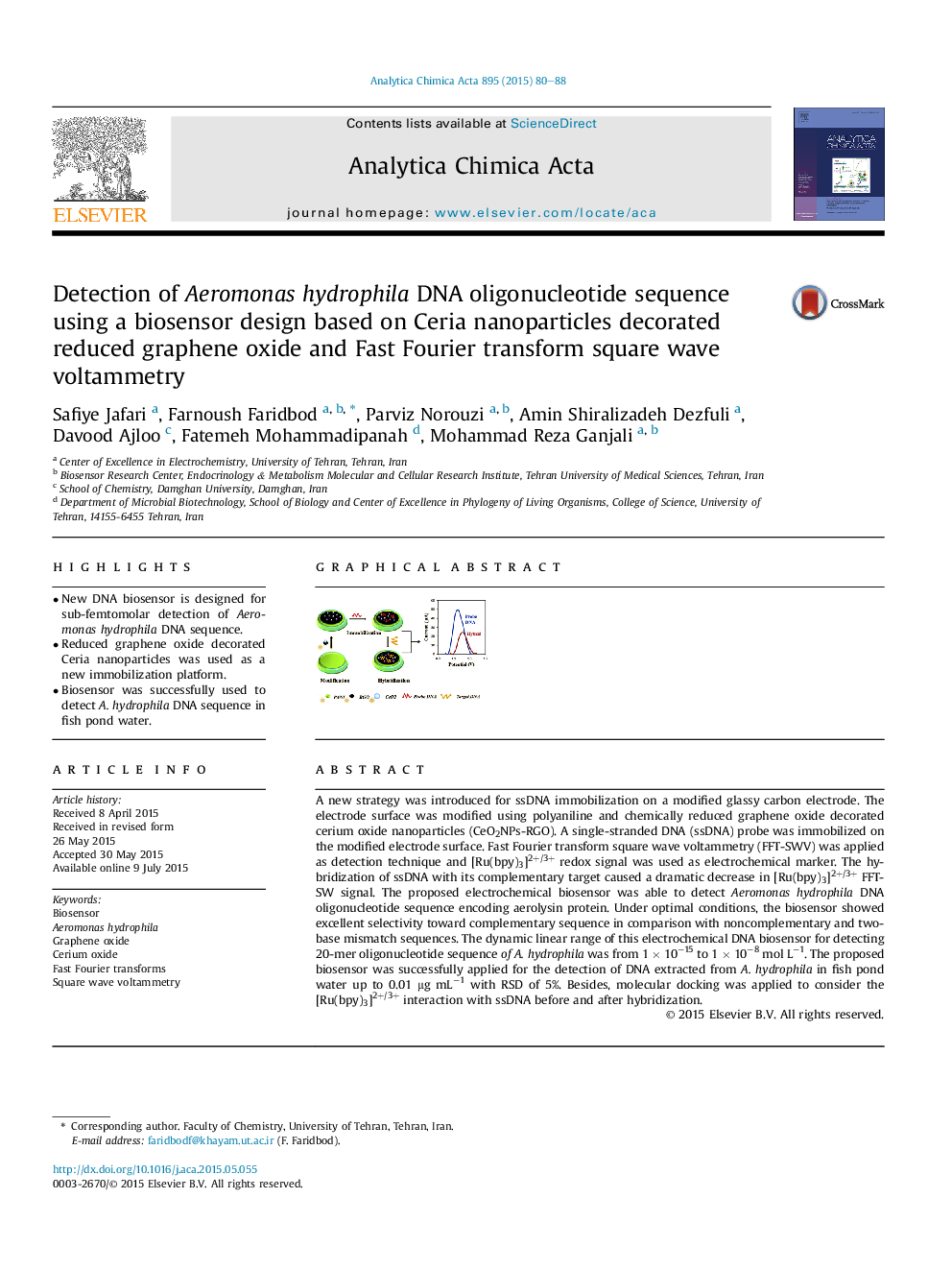| Article ID | Journal | Published Year | Pages | File Type |
|---|---|---|---|---|
| 1163307 | Analytica Chimica Acta | 2015 | 9 Pages |
•New DNA biosensor is designed for sub-femtomolar detection of Aeromonas hydrophila DNA sequence.•Reduced graphene oxide decorated Ceria nanoparticles was used as a new immobilization platform.•Biosensor was successfully used to detect A. hydrophila DNA sequence in fish pond water.
A new strategy was introduced for ssDNA immobilization on a modified glassy carbon electrode. The electrode surface was modified using polyaniline and chemically reduced graphene oxide decorated cerium oxide nanoparticles (CeO2NPs-RGO). A single-stranded DNA (ssDNA) probe was immobilized on the modified electrode surface. Fast Fourier transform square wave voltammetry (FFT-SWV) was applied as detection technique and [Ru(bpy)3]2+/3+ redox signal was used as electrochemical marker. The hybridization of ssDNA with its complementary target caused a dramatic decrease in [Ru(bpy)3]2+/3+ FFT-SW signal. The proposed electrochemical biosensor was able to detect Aeromonas hydrophila DNA oligonucleotide sequence encoding aerolysin protein. Under optimal conditions, the biosensor showed excellent selectivity toward complementary sequence in comparison with noncomplementary and two-base mismatch sequences. The dynamic linear range of this electrochemical DNA biosensor for detecting 20-mer oligonucleotide sequence of A. hydrophila was from 1 × 10−15 to 1 × 10−8 mol L−1. The proposed biosensor was successfully applied for the detection of DNA extracted from A. hydrophila in fish pond water up to 0.01 μg mL−1 with RSD of 5%. Besides, molecular docking was applied to consider the [Ru(bpy)3]2+/3+ interaction with ssDNA before and after hybridization.
Graphical abstractFigure optionsDownload full-size imageDownload as PowerPoint slide
